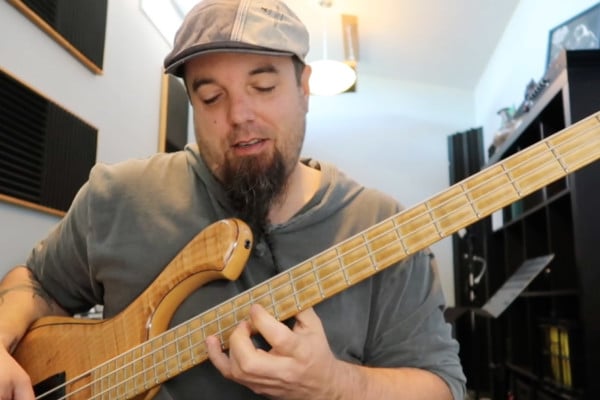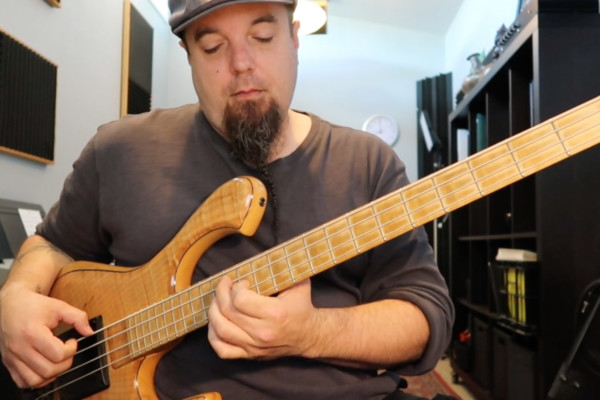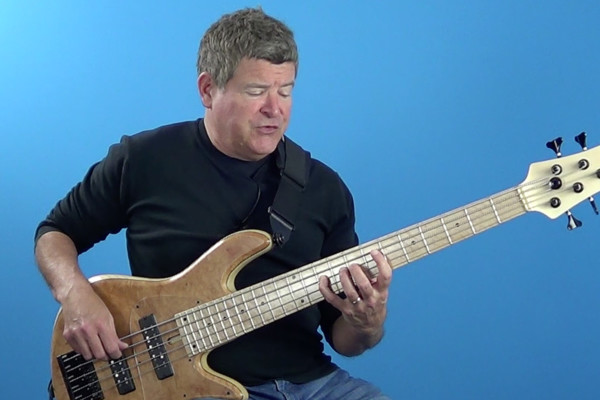How Important are Intervals in Bass Lines?

Q: How important are intervals in building a bass line? I’m still fairly new, but I’m taking lessons and playing as much as I can.
A: Intervals are nothing more than the spaces between notes (not in time, but the physical space between them on your fretboard). In other words, the interval of a minor 2nd is just the name for a half-step (moving up or down one fret).
When I first started, I found it helpful to think of intervals in relation to the major scale, which is the first thing many of us learn when we start taking lessons. A major 3rd is the same as the 3rd note of the major scale. A minor 3rd is one half-step below that (also the 3rd note of the minor scale). A major 6th is the 6th note of the major scale, and so on. A minor 7th is the same thing as a flatted 7th. It’s all just terminology.
So intervals, in and of themselves, are nothing more than a way of speaking about the measured distance between two notes. This is mostly useful when speaking about music or teaching someone a line or lick (ie: start on the root and then go to the minor 7th, for example).
The real usefulness of intervals comes into play when you start to hear what intervals sound like. Most people get a sense of this as they get more adept at transcribing bass lines, as you eventually start to hear what the different shapes and intervals sound like. You might hear something like Larry Graham’s bass line on “Thank You (Falettinme Be Mice Elf Agin)” by Sly Stone, and immediately recognize that iconic root-octave-b7 line and actually know what it is and looks like, before you even play it, because you’ve become familiar with the sound of those intervals over the course of playing scales and bass lines in your studies.
As I’ve written in previous articles on ear training, there are a myriad of ways to practice this and teach yourself (you can even teach yourself perfect or very good relative pitch, given time and patience).
I’d try and pay attention to the bass lines you learn and how they relate to the scales you know. Practice thinking in terms of intervals when you play different shapes. Experiment coming up with lines and licks outside of one scale or another by exploring purely intervallic approaches (and pay attention to what they sound like. Most students think it’s neat when they realize that they can play a diminished pattern, which is often believed to be some kind of mythical advanced jazz thing to many, simply by repeating the interval of a minor 3rd).
Using the word interval is really just another means of speaking about music and, more importantly, an alternate way of perceiving music and thinking about your lines. I play different kinds of lines when I think in intervals than I do when I think diatonically (within the scale) than I do when I think in terms of functional harmony. It’s all music but, just like in most things in life, a slight shift in the way you approach a problem or project can lead to all kinds of different and interesting takes on that thing.
Diversity of approach and diversity in your approach to your explorations often leads to a more well-rounded understanding of that thing as well as often leading to a more unique perspective (ie: your voice on the instrument’).
Just as it’s good to have a strict practice regiment, it’s also good to allow yourself time to play and explore with reckless abandon and intervallic play is a great way to open some interesting harmonic doors.
Have a question for Damian Erskine? Send it to [email protected]. Check out Damian’s instructional books, Right Hand Drive and The Improviser’s Path.




Thank you Damian for your posts which are always very instructional.
“a diminished pattern, which is often believed to be some kind of mythical advanced jazz thing”
You have piked my curiosity, now I definitely have to look into this!